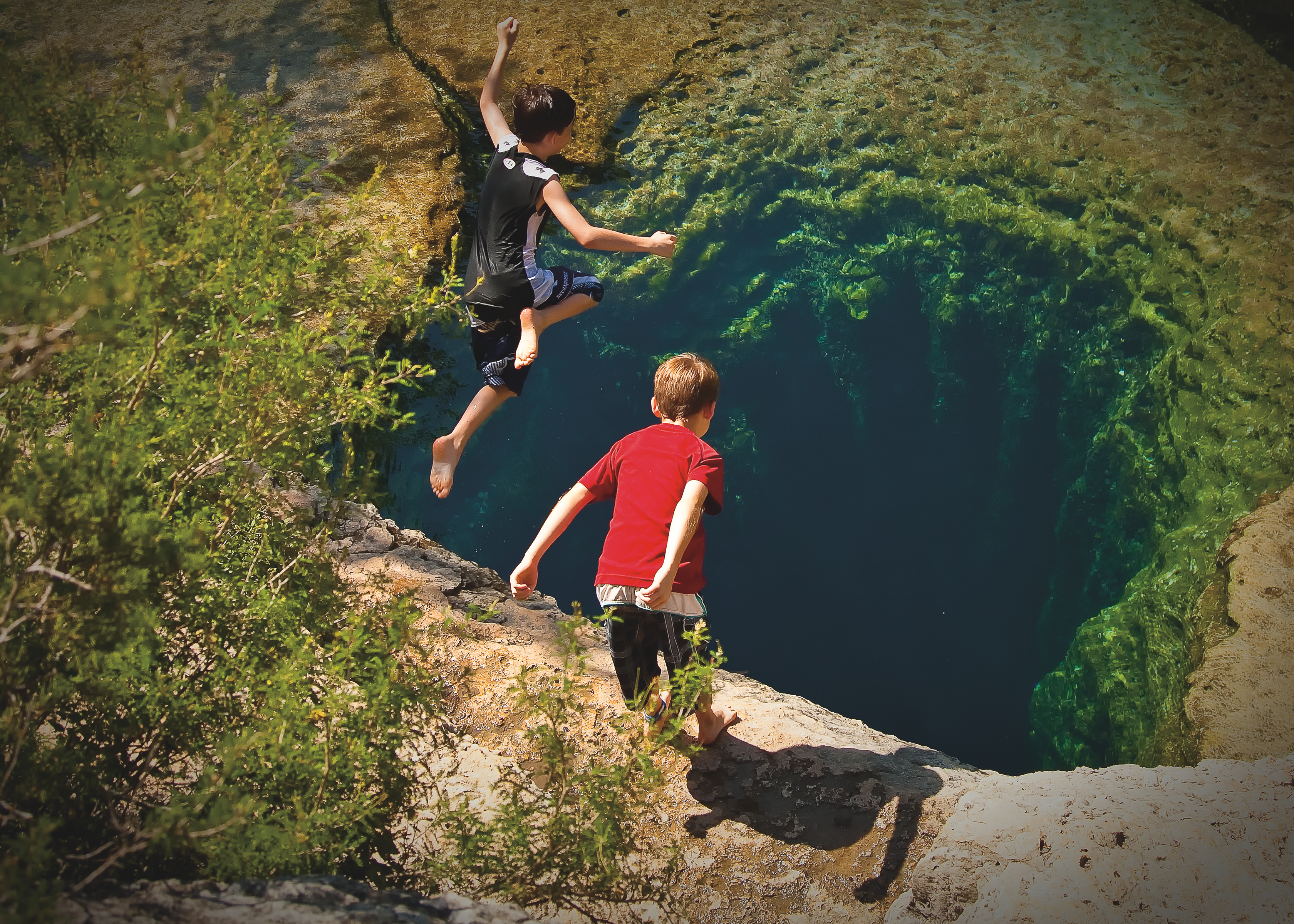 What makes the Texas Hill Country unique? In my mind, it comes down to one thing: groundwater. It is impossible to overstate the importance of groundwater to this region, because without it, the Hill Country would not be the region we know and love.
What makes the Texas Hill Country unique? In my mind, it comes down to one thing: groundwater. It is impossible to overstate the importance of groundwater to this region, because without it, the Hill Country would not be the region we know and love.
It is the beauty and abundance of the Hill Country’s water resources that have attracted people here for thousands of years.
As the recently published State of the Hill Country Report reveals, the region is on the verge of becoming a victim of its own success as people are moving to the Hill Country in droves for its beauty and high quality of life. The report introduces eight key metrics to help track the region’s health and guide decisions that will determine whether the region will continue to thrive or live beyond its means.
Unfortunately, current levels of groundwater pumping threaten to dry up rivers and springs as the Hill Country heads down the second path of living beyond its means.
Population growth puts pressure on groundwater.
Indigenous communities were the first peoples to settle near springs (Barton, San Marcos, Comal, San Antonio) that cradle the eastern edge of the Hill Country, traversing the outcrop of the Edwards Aquifer from which they are sourced. Many indigenous groups, such as the Coahuiltecan people, believe these springs to be sacred and part of their creation story.
Today, unfortunately, groundwater is more of a commodity than a revered resource. The Hill Country is one of the fastest growing regions in the country, with its population increasing nearly 50% in the last 20 years. Much of this growth is occurring along the I-35 corridor between Austin and San Antonio, and groundwater is increasingly being used as a source of water for new sprawling suburban developments and growing towns.
Landowners recognize that groundwater is a critical water supply in rural areas, indeed often the sole source of water. But many people, particularly from urban areas, do not always appreciate the connection between groundwater in the Hill Country and the cool, clear swimming holes they escape to on a scorching summer afternoon. Even our legal and regulatory framework ignores the connection between groundwater and surface water, providing no clear pathway to holistically manage these two interconnected resources.
Yet the connection is profound. Five of the top 10 largest springs in Texas come from groundwater in the Edwards Aquifer, as the State of the Hill Country Report notes. And smaller swimming holes, like Blue Hole in Wimberley, Hamilton Pool, or the Blanco River, are sustained by groundwater from the Trinity Aquifer.

Drought conditions coupled with increased groundwater use have caused Jacob’s Well (pictured) to stop flowing several times within the last decade. Photo credit: Carl Griffin
These springs and rivers are in danger of drying up.
Increases in groundwater pumping lowers aquifer levels, which can ultimately break the connection between groundwater and surface water. For example, drought conditions coupled with increased groundwater use have caused Jacob’s Well to stop flowing several times within the last decade, even though it flowed continuously through the drought of record in the 1950s.
Although just a few feet of drawdown in the aquifer level will reduce spring flow from Jacob’s Well, groundwater conservation districts in the area have not adopted a long-term management goal (referred to as a desired future condition, or DFC) that will ensure Jacob’s Well continues to flow in the future. In fact, the current goal allows a 30-foot drawdown in the Trinity Aquifer across the region through 2060, which experts say should be decreased in order to sustain water supply and spring flows for Jacob’s Well.
We can take action to protect our Hill Country water resources.
The Hill Country needs to grow thoughtfully and sustainably, encouraging water reuse and rainwater collection through increased incentives to developers and landowners. , like aquifer storage and recovery where water can be stored in aquifers during wet years and pumped out when needed during dry years. Ecologically valuable land that acts as a sponge, soaking and funneling rain underground and recharging aquifers must be protected.
On the demand side, landowners should be compensated to conserve their groundwater and to steward their land for enhanced recharge. In some cases, certain restrictions against groundwater pumping should be implemented in critical areas that recharge springs and rivers. The Hays Trinity Groundwater Conservation District has been on the frontlines of this approach, developing stakeholder-driven, science-based policies to manage groundwater in the Jacob’s Well Groundwater Management Zone to protect both landowners’ wells and spring flow. Groundwater districts managing the Trinity Aquifer must consider and adopt desired future conditions to maintain spring flow, as the Barton Springs Edwards Aquifer Conservation District has done for Barton Springs.
Additionally, investment in science like local data and groundwater modeling can better inform policy to protect the connection between groundwater and surface water. In partnership with Hays County and other stakeholders, the Meadows Center for Water and the Environment is working on an integrated groundwater and surface water model for the Blanco River Watershed, the first-of-its-kind in the Hill Country, which will enable groundwater conservation districts to understand how increased groundwater pumping impacts springs and flow in the Blanco River.
Ultimately, the Hill Country needs more voices advocating for all of these policies to protect both our groundwater and iconic rivers and springs that depend on them. Rural landowners, farmers, wildlife, fishermen, hunters, ranchers, towns, breweries, swimmers all depend on groundwater to give adequate flow to springs, creeks and rivers. It is up to all of us to conserve and protect these water resources that make our Hill Country thrive.












